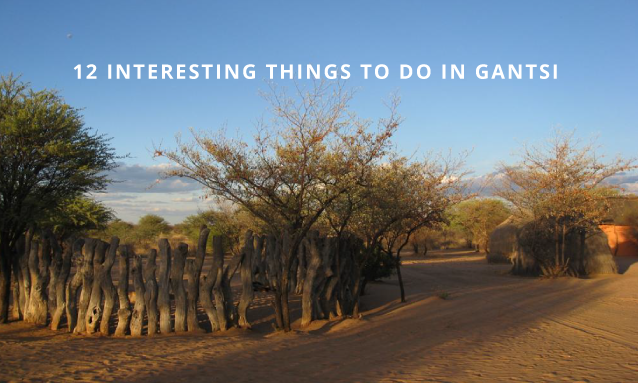
12 Interesting things to do in Gantsi (or Ghanzi as it is often referred to)
There’s the widely held but misguided idea that Botswana towns that are far removed from the capital city, Gaborone are boring and have nothing to offer for entertainment. What’s more, most other interesting places in Botswana are overshadowed by the more famous and popular areas such as the Chobe and the Okavango Delta. Gantsi is one such example, which is sad because the town does have a lot to offer! Gantsi is teeming with so much to see, do and experience, you just have to know where to go. If you’re big on nature and rich cultural heritage, Gantsi is just the place for you.
Luckily for you, we have compiled a list of cool things you can do in and around the town.
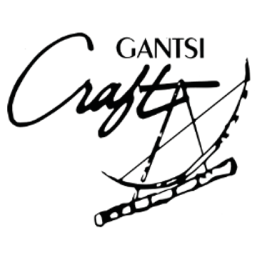 1.Gantsi Craft – Arts & crafts in Gantsi
1.Gantsi Craft – Arts & crafts in Gantsi
Run by the Gantsi Craft Trust, a non-profit organisation that works to empower San communities in Botswana through craft production. The retail shop at Gantsi Craft has displays outlining the various skills and creativity that go into making the craft products, both in the past and the present. Visitors are given the opportunity to observe a group of women, who sometimes include many of the staff, at work making the various crafts. The shop also has plenty of items for people to look at or buy as gifts/souvenirs.
Part of the Kuru Family of Organizations, Gantsi Craft works with craft producers in 16 remote settlements in the Ghanzi and Kgalagadi districts in Botswana. The Gantsi Craft product range is diverse and rich in cultural heritage. The items sold include traditional San crafts, hand-dyed textiles, decorated bags, leather aprons, bows and arrows, musical instruments and woven mats. Prices are 30- 50 % lower than in Maun or Gaborone. All proceeds go to artists from 15 San settlements across western and southern Kalahari. There’s also a small museum at the back of the shop.
The cooperative was established in 1983 as a craft outlet and training centre for the San group of people in the Gantsi area.
Opening times: 8am-12.30pm & 2-5pm Mon-Fri, 8am-noon Sat
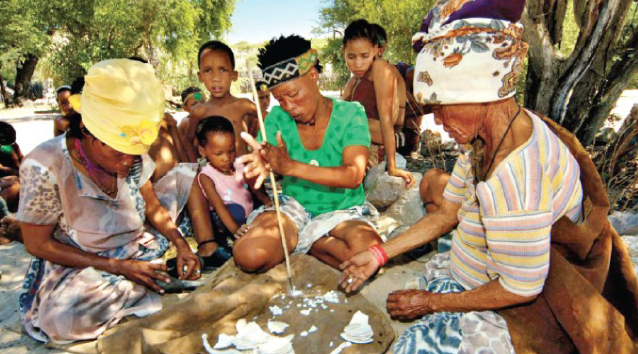
2. The San Museum in D’Kar
D’Kar village, the site of the museum, is one of the San settlements located about 40 km from Gantsi. Not much happens in D’Kar but the museum, which houses a wealth of San culture and history, a cultural centre and the Naro Language Project, is well worth a visit. A real treat awaits History lovers in the form of information about hunting and gathering, craft production and traditional medicine there. The Kuru Art Center where local San producers create unique pieces of artwork including paintings and prints lies close by.
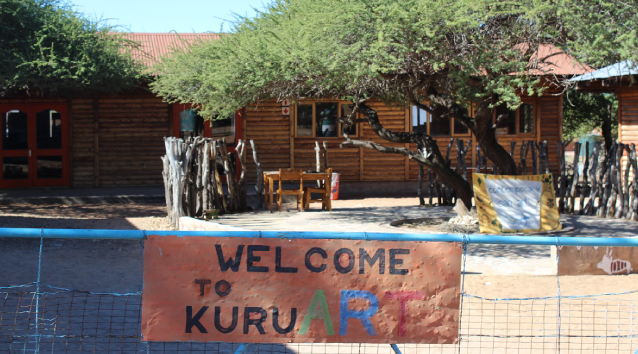
3. Kuru Art Centre
Much like their ancestors before them did all over Southern Africa, the modern day Bushman artists of the Kuru Art Project use art as an outlet through which to express their traditions and recent life experiences. The Kuru Art Project encourages and assists the artists by exposing them to contemporary art materials and techniques. The centre also gives them much needed administrative and marketing support to put their art out there.
Kuru Art Project artists are well known the world over – their art pieces have been exhibited in over 15 countries globally, with about 160 exhibitions and counting!
The Kuru Art Project is run by a community trust called the Kuru Development Trust. It is based in D’Kar, a small settlement in western Botswana. The artists reside in D’Kar and up in the vast Kalahari sandveld in and around the Gantsi district. They are skilled traditional dancers, storytellers, musicians and craft producers who have smoothly transitioned to use contemporary art materials to express their various art forms. The modern day tools and techniques they use include oil on canvas, lino cuts, dry point engravings and lithography.
The artists have won many awards, both collectively and individually. Their work can be found in private and public collections throughout the world. Members of the project have had their work used in many publications, book covers, on the tails of British Airways planes and on a set of stamps issued by the Botswana Postal Services.
Twenty-five years on, the group is well known and their art pieces have been exhibited in over 15 countries globally with about 160 exhibitions and counting.
4. Whatona Cultural Village
On the outskirts of town is a quaint cultural village run by a local woman. The idea behind the village is to share some of the Setswana culture and way of life. There are various traditional huts in different styles dotted around the area. Visitors to the village have the option of staying the night and experiencing it all firsthand. As is the norm in many a Setswana village, goats and chickens can be seen roaming around. All of the cooking is done over an open fire. A truly authentic experience of life in a typical Setswana village.
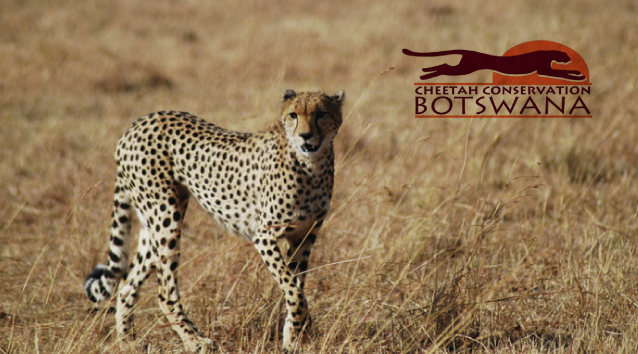
5. Cheetah Conservation Botswana Gantsi Outpost
Headquartered in Gaborone, a research and education field camp situated in the Gantsi farmlands of the western Kalahari, and an education base in Maun, just south of the Okavango Delta.
Also not far from town is the Cheetah Conservation Botswana outpost. The Camp staff are very experienced in conservation and conduct research on cheetahs in and around the Gantsi region. The camp itself is only a small outpost but has a nice pool and a wealth of information about cheetah conservation in Botswana
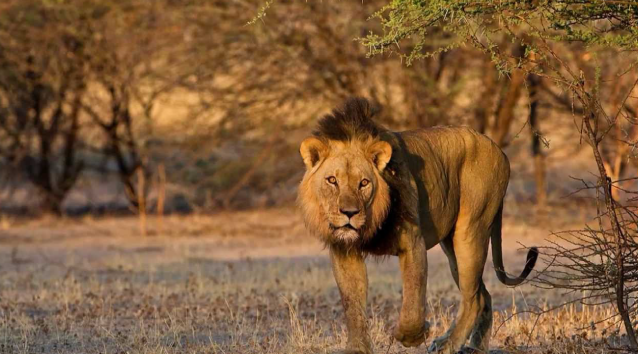
6. Central Kalahari Game Reserve
The infamous Central Kalahari Game Reserve (CKGR) lies about 150 km from Gantsi. It is the most contested area due to the much-publicised conflict between the Botswana government and the San people. Many San people have been relocated from the CKGR and resettled in settlements around Botswana.
Covering 52,800 square kilometres- 9% of Botswana – the Central Kalahari Game Reserve is the world’s second largest game reserve! The gently undulating land is dotted with sand dunes and covered with waist-high grass and bush scrub.
Summer rains herald the arrival of large herds of wild animals including springbok, gemsbok, wildebeest, red hartebeest, eland, kudu, warthog and giraffe which all gather to graze the rich, lush grasslands. The CKGR is also home to such predators as the brown hyena, wild dog, cheetah, leopard and lion.
7. Kuru Dance Festival
Every year, the Kuru Dance Festival, a very popular cultural event, brings together various San groups from Botswana, Namibia and South Africa for an electrifying celebration of their rich cultural heritage of storytelling, song and dance.
Different dances are performed to tell the life story of the San people. They use highly charged dance routines to tell the story of their people, past and present. The dance routines tell stories around their hunter-gatherer lifestyle, rites of passage, puberty and courtship as well as trance healing. The hunting dances are a dramatic re-enactment of the hunt – from spoor recognition to the ultimate slaughtering the animal. They celebrate a successful hunt and pay tribute to Mother Nature for the blessing.
*A sneak preview of what’s to come from the upcoming Kuru Dance Festival this year; scheduled for August 4-5 at Dqae Qare lodge near D’Kar, Botswana.
The annual festival usually takes place in August or September. The Kuru Family of Organizations hosts the Kuru Dance Festival in D’Kar. It is a celebration of traditional dancing in and around the Gantsi region. There is traditional food on offer to sample as well as craft production and selling.
The Kuru Dance Festival is very popular among the locals and also draws visitors from around the world.
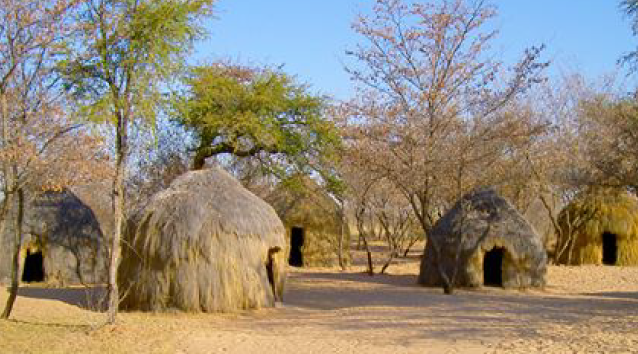
8. Visit Gantsi Trail Blazers
Julian Butler, a local businessman, set aside a former cattle ranch in Gantsi in order to set up an authentic hunter/gatherer community of the San with a view to helping them cope with the socio-economic pressures they face in modern day Botswana.
Gantsi Trail Blazers is aimed at visitors who wish to experience and see for themselves the fast disappearing unique and ancient culture of the Bushmen of Botswana. It offers a number of activities through which to interact with them and to discover how they have survived in the harsh condition of the Kalahari over the years. It offers the Bushmen an opportunity to utilise their own specialised skills in a work environment within which they are totally at home. The ecotourism venture gives them a sustainable income and helps keep their culture alive.
The Gantsi Trail Blazers is located approximately 4 km (about 3 miles) away from the main road, far away enough to enjoy the real African bushveldt.
Excursions to look forward to at the Gantsi Trail Blazers…
Walking with the San
Accompany a small group of Bushman, men and women as they go about a number of their traditional activities. Around the campfire at night, you can experience the ancient dance rituals of the San/Bushman. On special occasions, this could be a healing or trance dance, which can continue all night and is an intense spiritual experience for both participants and visitors alike.
The guides are San men and women. An interpreter is made available to interpret all there is to know about how the San adapted to the Kalahari Desert, by identifying and gathering various of edible foods, medicinal roots, and other veld products. During the excursion, visitors will gain insight into the rich San culture. The walk through the bush is no more than 4km and lasts about an hour.
Horse riding
Horse riding is recommended for experienced riders only. Because the horses are farm trained and mainly ridden by Bushmen, they do not respond well to inexperienced or semi-experienced riders. The excursion is about an hour and a half long.
The maximum number of riders per guide is six and all riders will need to sign an indemnity form.
Swimming at the old quarry
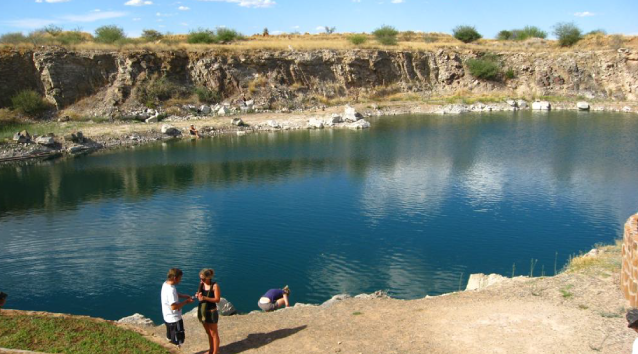
Enjoy a swim at the ‘gat’, with the bream, in the crystal clear waters purified by the Kalahari sand. The ‘gat’ is a man made quarry, about ten minutes ride from Xana Camp. Packed or cooked lunches can be served on request, in the shade of the old rock walls, where you may be lucky to find a 600 – million – year -old arkosic fossil.
Traditional dancing with the San
A traditional campfire dinner is served, after which guests can watch the ancient dancing rituals of the San. These dance routines are not only a celebration of life but are also a means of passing on historic folklore from generation to generation.
The dances are not thought to have changed in the last 20 000 years of San/Bushman culture.
For further information, please email: ghanzi@go.botswanatravelservice.com
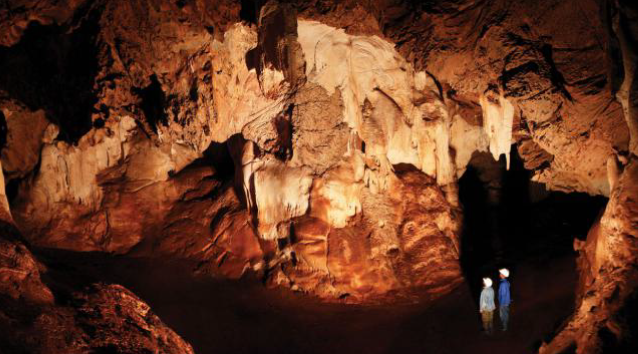
9. Gcwihaba Caves
The caves are without a doubt situated in an area of Botswana counted among the wildest and most remote destinations in Botswana. Gcwihaba is a fascinating underground labyrinth of caverns and pits, linked passages, fantastical stalagmite and stalactite formations, and beautifully coloured flowstones that appear like waterfalls of rock.
The most commonly used northern entrance will bring you face-to-face with countless bats hanging upside down from the cave walls. Not an experience for the faint of heart or the squeamish! The bats are harmless but may scare the living daylights out of many, as they get closer to them because they are likely to release ear-splitting screeches as they make a mad exodus out of the caves! The most common species are the commerson’s Leaf-nosed Bat – the largest insectivorous bat in Southern Africa, the tiny Dent’s Horseshoe Bat and the Egyptian Slit-faced Bat.
The caverns vary in size, with some measuring as high as 10 metres, and at the extreme opposite; some are so tiny that people may need to squeeze in and out of them or even crawl on their front to get through them!
The main cavern is called ‘Drotsky’s cavern,’ named after the Gantsi farmer, Martinus Drotsky who was the first European to be shown the caves by the !Kung San in 1934.
Gcwihaba has been part of the Kalahari ecosystem for almost three million years. It was formed during the Pleistocene Age when the area was a lot wetter. There have been dramatic climatic variations alternating between the very wet to the very dry in this area.
Unique ecosystems of flora and fauna have been recorded at Gcwihaba; including the Namaqua Fig, found only at the hills and easily recognisable by its long trailing roots, the endemic aloe, tent tortoises, barking geckos, Ruepel’s parrot (also unique to this region) and barn owls, which are resident to the live caves.
Gcwihaba is a designated National Monument and a proposed UNESCO World Heritage Site.
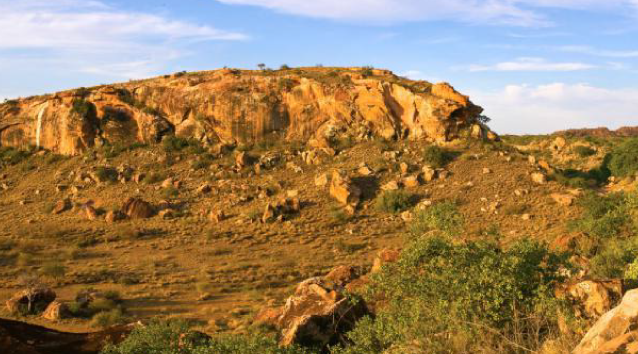
10. Aha Hills
The Aha Hills Straddle the Botswana and Namibian border. The hills lie about 50 km north west of Gcwihaba and can be seen from it. The hills are mostly rough and jagged, having been split by the elements into numerous faults and fractures. They cover an area of approximately 245 sq km, mostly in Botswana.
11. Kalahari Arms Hotel
Kalahari Arms Hotel first opened its doors the first in 1962, making it one of the oldest in Botswana. It’s conveniently situated in the centre of town, making it safer too.
It’s managed by a couple who’ve been at the helm for over two decades! With prior notice, the hotel can arrange excursions such as game drives or a visit to a San village.
12. Gantsi Sports Bar
Still a growing town, Gantsi does not have much in the way of a social scene. What it’s not short of, however, is bars. One of the safest and most decent is the Sportsbar, down the road from San Arts and Crafts. There are picnic tables outside to sit at and enjoy the music, usually the latest offering from South Africa.
Bonus: Nip over to Maun or Windhoek
Should you get bored of staying in the ‘slow lane’ in Gantsi, you could easily nip over to Maun, Gaborone or even across the border to Windhoek, Namibia.
Gantsi may seem to some to be in the middle of nowhere but it’s very strategically placed to allow for easy travel to different interesting places!
275 km / 171 miles from Maun
540 km / 335 miles from Windhoek
636 km / 395 mile from Gaborone]
Are you from the Gantsi area or familiar with it? What do you feel we’ve left out that’s worth sharing with the rest of Botswana and the world? Please feel free to share your views and even send us some of your pictures of Gantsi and the general area.
Reference: Botswana Tourism
Image sources: Aha Hills – Botswana Tourism / Cheetah – Cheetah Conservation Botswana / Lion – Hendri Venter (via youtube) / Featured image and dam – Larzizou / San Museum – mediaindia.eu / Trail Blazers – SafariNow / Kuru Art Centre – studyabroadbotswana.blogspot.com

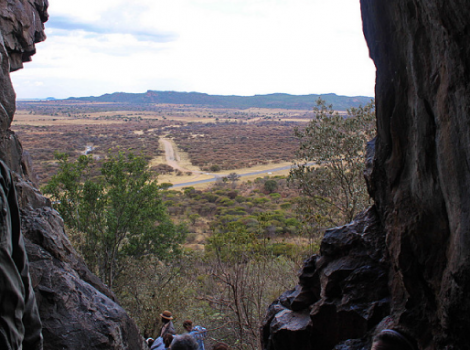
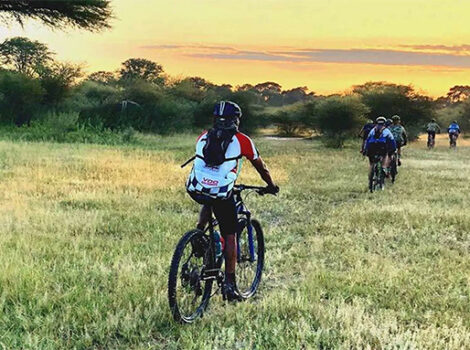
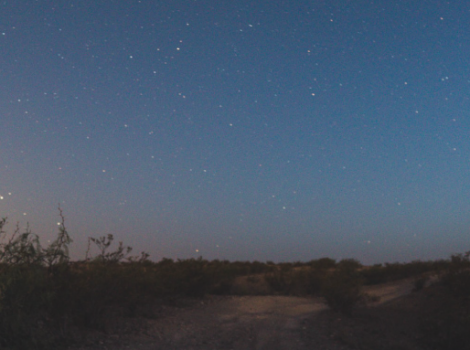
i want places similar to Khawa Dunes, I forgot the name of the place.